Ecuador is often described as a “South America in miniature” because this small country contains all the diverse landscapes of the continent packed together in one country: the beautiful beaches on the Pacific coast, the impressive Andes Cordillera, the diverse Galapagos Islands, and a portion of the largest jungle in the world, the Amazon Basin.
Ecuador is divided into four geographic regions: the Coast, comprising just over a quarter of the country; the Sierra, which extends in a double row of mountains and a narrow uninhabited plateau known as the inter-Andean valley; the East or Amazon region, east of the Andes; and the Insular region, aka the Galapagos.
➡️FIND BUDGET-FRIENDLY ECUADOR TOUR PACKAGES
The Coast (La Costa)
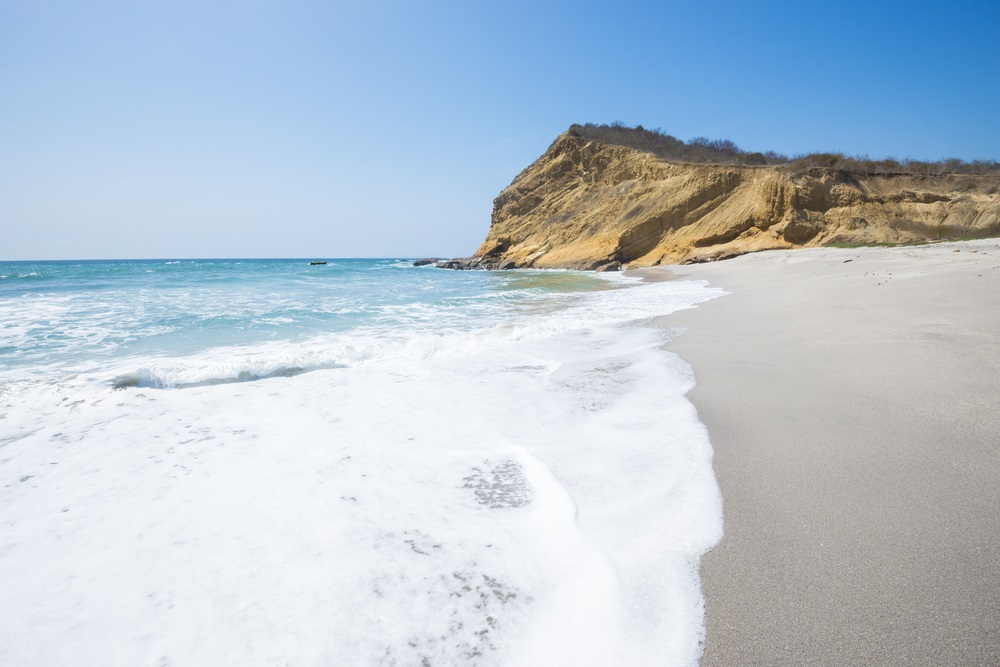
The Coast is a region that is located to the west of the Cordillera de los Andes and is crossed from north to south by a mountainous chain of minor height, full of extensive alluvial plains. The Ecuadorian Coast is formed by three main ecosystems: the tropical rainforests of the north, the tropical savannas of the central and southwest regions; and the dry forest of the western and southern peninsula.
Along the coastal littoral are distinguished two additional ecosystems characterized by their animal and vegetable communities: the entrances of mangrove and other areas, and the beaches and cliffs known for their peculiar rock formations.
The average temperature that prevails in the Coast is of 22º C (71.6º F). The winter lasts from December to May and the summer from June to December. The warm current known as Niño Stream causes an increase in rainfall rates between January and May.
Top Travel Destinations:
- Montañita: A popular beach town known for its surf culture, vibrant nightlife, and laid-back atmosphere.
- Machalilla National Park: This park is home to the famous Isla de la Plata, often called the “Poor Man’s Galápagos,” and offers opportunities for snorkeling, diving, and wildlife viewing.
The Andes (La Sierra)
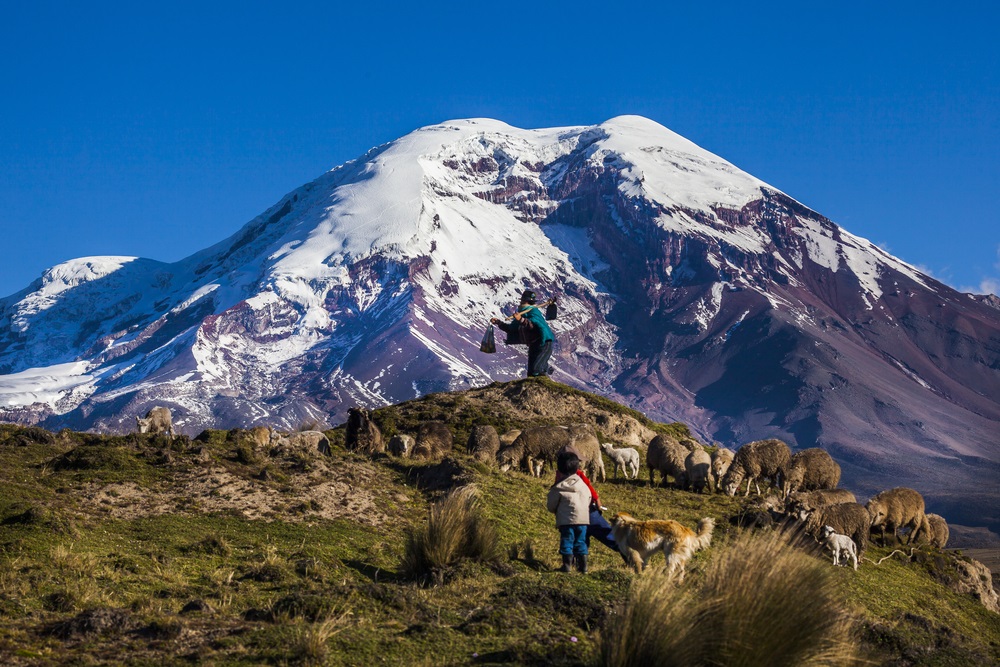
Those who have never visited Ecuador often imagine it as a jungle land that is in the middle of the world, however, the “Cordillera de los Andes” represents a large area of the country, with volcanoes rising to the sky, the Cordillera divides the Ecuador into two wooded plains with a narrow intermediate strip bordered by the “Avenue of the Volcanoes”.
Here, one can find flora and fauna of indescribable richness that have adapted to the low temperatures, the strong winds, the intense ultraviolet radiance, the rain, the hail, the snow and the great heights.
In the Sierra, the rainy season or winter lasts from October to May, with an average annual temperature that varies from 12º C (53.6º F) to 18º C (64.4º F). However, the daily variation can be extreme, with very hot days and very cold nights. And yet, some people refer to the climate of the Sierra as an “eternal spring”.
Top Travel Destinations:
- Quito: The capital city, located at an altitude of 2,850 meters, is a UNESCO World Heritage site with well-preserved colonial architecture and vibrant local markets.
- Cotopaxi National Park: Home to the iconic Cotopaxi volcano, this park offers hiking, wildlife spotting, and stunning views of the surrounding peaks.
The Amazon (El Oriente)
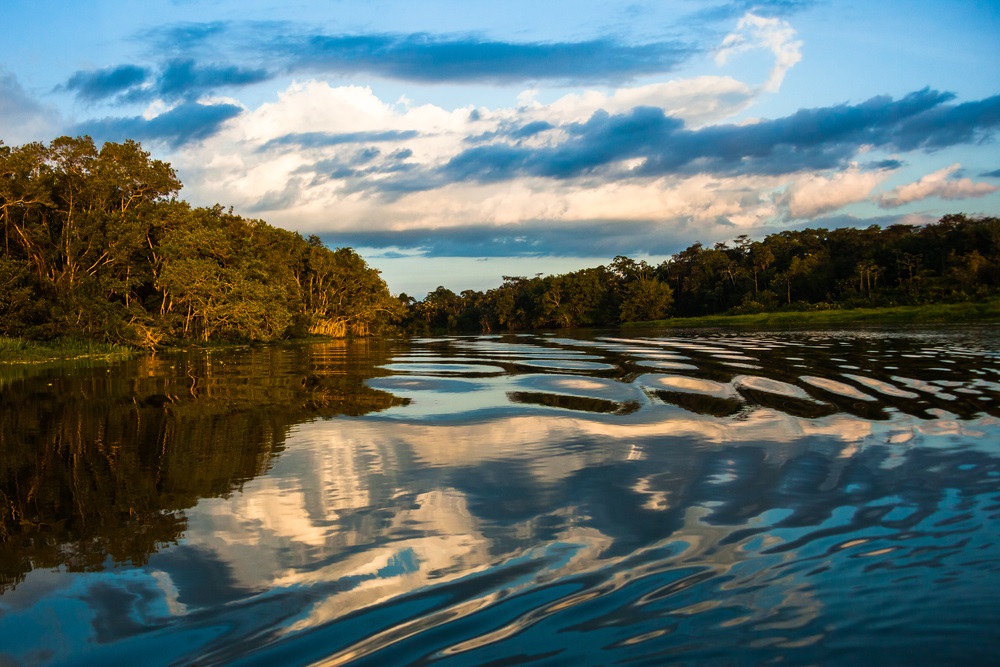
The Ecuadorian Amazon extends over an area of 120,000 km² (74,564 miles²) of exuberant vegetation typical of tropical rainforests. The Andes Cordillera forms the western boundary of this region, while Peru and Colombia form the southern and eastern boundaries respectively. The Amazonian rivers have washed from the Andes a great amount of materials, forming alluvial soils and terraces that are used for agriculture.
The average annual temperature ranges from 24° C (75.2º F) to 25° C (77º F). Although the months of December to February are the driest, throughout the year they are evenly distributed of 300cm (118 inches) and 400cm (157 inches) of rain.
Top Travel Destinations:
- Yasuni National Park: A UNESCO Biosphere Reserve, Yasuni is one of the most biodiverse places on Earth, home to countless species of plants, animals, and indigenous tribes.
- Cuyabeno Wildlife Reserve: Known for its scenic lagoons and abundant wildlife, this reserve is perfect for birdwatching, canoeing, and exploring the jungle.
The Galapagos Islands (Archipiélago de Colón)
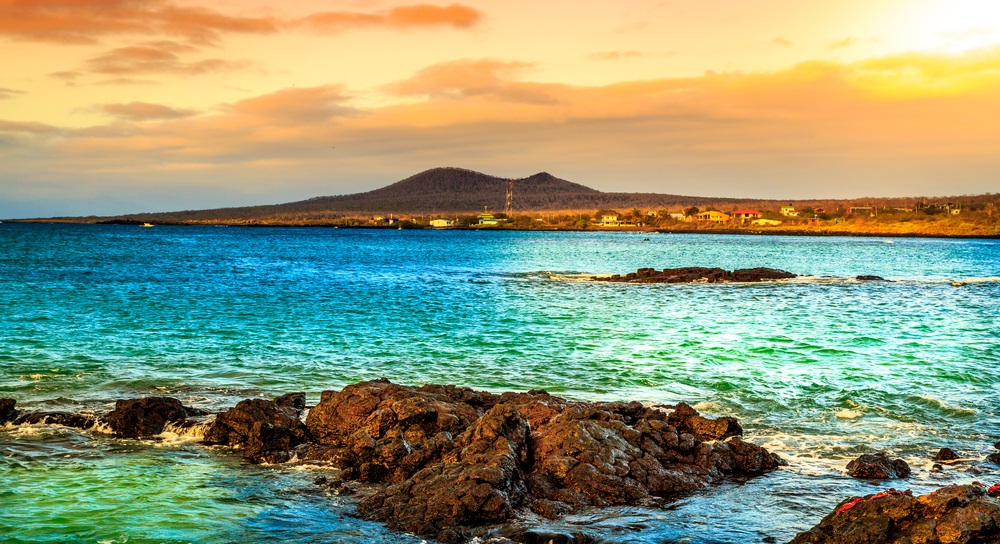
Visit the Galapagos Islands means exploring nature in its pristine, purest state. So much so that they motivated the young English naturalist Charles Darwin, who visited the islands in 1835, to write his famous book entitled The Origin of Species and the world has not been the same since.
Located at 1,000km (621 miles), far from the coast of Ecuador, this mysterious and fascinating archipelago is composed of 13 large islands, six small islands and more than 40 islets. The entire archipelago has a total length of 8,010km (4,977 miles).
A large part of the archipelago is south of the Equator, where several marine currents converge. In short, the Galapagos are the fusion of all the elements necessary to create a zoological, botanical and geological wonder at the same time.
The islands emerged from the Pacific Ocean five million years ago, as a result of underwater volcanic eruptions. It is the lava formations and the volcanic rock that gives the tourist the impression of being “in another world” when he visits the Galapagos.
The weather in Galápagos Islands is Mild and dry from June to November, warmer and wetter from December to May. Temperatures range from 22°C to 30°C.
Top Travel Destinations:
- Santa Cruz Island: The most populated island, home to the Charles Darwin Research Station and beautiful beaches like Tortuga Bay.
- Isabela Island: The largest island in the archipelago, known for its active volcanoes, diverse ecosystems, and opportunities for snorkeling with sea turtles and sharks.
Best Time to Travel to Ecuador
Ecuador’s climate varies significantly by region and altitude, so the best time to visit Ecuador depends on the destination you plan to explore:
Coast: December to May is perfect for beach vacations, with warm weather and calm seas.
Andes: June to September is ideal for hiking and outdoor activities, with clear skies and mild temperatures.
Amazon: The dry season (August to December) is the best time for wildlife viewing and jungle treks.
Galápagos Islands: The warm season (December to May) offers the best underwater visibility for snorkeling and diving.
Ecuador Travel Advisory
Is Ecuador safe to travel? While Ecuador is generally a safe destination for travelers, it’s essential to stay informed about the current situation. Check the latest Ecuador travel advisory before your trip and follow common safety precautions, such as avoiding isolated areas at night and keeping your belongings secure.
- Urban safety
In major cities like Quito, Guayaquil, and Cuenca, petty crime such as pickpocketing, bag snatching, and theft from vehicles can occur, especially in crowded areas and public transportation hubs. It’s advisable to avoid displaying valuable items like jewelry, cameras, or large amounts of cash. Stick to well-lit and busy streets at night, and consider using registered taxis or ride-sharing services.
- Amazon and remote areas
If you’re planning to explore the Amazon or other remote regions, it’s highly recommended to travel with an experienced guide. The terrain can be challenging, and the risk of getting lost is significant. In addition, some areas are only accessible by boat or small aircraft, so plan accordingly and ensure that someone knows your itinerary.
- Galápagos islands
The Galápagos are generally very safe, but due to the fragile ecosystem, it’s crucial to follow all guidelines and regulations set by the Galápagos National Park. Always travel with licensed guides when exploring the islands to ensure both your safety and the preservation of the environment.
- Health and medical precautions
Before traveling to Ecuador, ensure that your vaccinations are up-to-date. The CDC recommends vaccinations for Hepatitis A, Typhoid, and Yellow Fever, especially if you’re visiting the Amazon or rural areas. Malaria and dengue fever are present in some lowland regions, so take preventive measures against mosquito bites by using insect repellent, wearing long sleeves and pants, and sleeping under mosquito nets when necessary.
- Natural hazards
Ecuador is located in a seismically active region, and earthquakes can occur. Familiarize yourself with local emergency procedures, especially if staying in coastal areas prone to tsunamis. Volcanic activity is also a consideration, particularly around active volcanoes like Cotopaxi and Tungurahua. Monitor local news and alerts from the Instituto Geofísico for any updates.
What to Expect in an Ecuador Trip
When traveling in Ecuador, you will experience the unique culture, natural beauty and colorful activities. Here’s what you can expect during your visit:
Cultural experiences: In the Andes, you’ll encounter vibrant markets like Otavalo, where indigenous communities sell traditional crafts, textiles, and produce. The country’s colonial past is evident in the architecture of cities like Quito and Cuenca, with their narrow cobblestone streets, grand cathedrals, and charming plazas.
Cuisine: Ecuadorian cuisine varies by region, with each offering distinct flavors and dishes. On the coast, you’ll find seafood dishes like ceviche, while the Andes are known for hearty stews like locro de papa (potato soup). Don’t miss trying guinea pig (cuy), a traditional dish in the highlands. For those with a sweet tooth, desserts like flan and tres leches cake are popular.
Transportation: Getting around Ecuador is relatively straightforward, with a variety of options including buses, taxis, and domestic flights. Buses are the most common and economical way to travel between regions, but the quality of service can vary. For more comfort, consider using private transportation or booking tours. In the Galápagos, inter-island travel is typically done by speedboat or small plane.
Accommodation: Ecuador offers a wide range of accommodation options, from budget hostels and guesthouses to luxury hotels and eco-lodges. In the Amazon, you can stay in jungle lodges that offer guided tours and all-inclusive packages. The Galápagos Islands have a mix of hotels and lodges, with some offering all-inclusive tours that include activities like snorkeling and island-hopping.
Wildlife: Ecuador is one of the most biodiverse countries in the world. In the Amazon, you might spot monkeys, sloths, and a myriad of bird species. The Galápagos Islands are famous for their fearless wildlife, including giant tortoises, marine iguanas, and blue-footed boobies. Always maintain a respectful distance from animals, and follow the guidance of your tour guide to ensure both your safety and the well-being of the wildlife.
Adventure: The diversity of landscapes means there’s a plethora of adventure activities. You can hike to the summit of Cotopaxi or Chimborazo, explore the Amazon by canoe, surf the waves in Montañita, or dive in the Galápagos.
By being prepared and informed, your trip to Ecuador can be a safe, enjoyable, and unforgettable experience.
FAQs
What are the 4 distinct geographical areas in Ecuador?
The four regions of Ecuador are the Amazon (El Oriente), the Andes (La Sierra), the Coast (La Costa), and the Galápagos Islands (Archipiélago de Colón). Each region has its own unique climate, landscapes, and attractions.
Where is Ecuador located?
Ecuador is located in the northwestern part of South America, bordered by Colombia to the north, Peru to the south and east, and the Pacific Ocean to the west.
What is the climate of Ecuador like?
Ecuador’s climate varies widely depending on the region, ranging from the tropical climate of the Amazon and coast to the cooler, temperate climate of the Andes and the mild climate of the Galápagos Islands.
What are some interesting facts about Ecuador?
- Ecuador is one of the most biodiverse countries in the world.
- The Galápagos Islands are part of Ecuador and were the inspiration for Charles Darwin’s theory of evolution.
- Ecuador is the only country in the world named after the equator, which runs through it.
Ecuador’s four regions offer a wealth of experiences for travelers, from exploring the depths of the Amazon rainforest to hiking in the Andes, relaxing on the Pacific coast, and discovering the unique wildlife of the Galápagos Islands. With its diverse landscapes and rich cultural heritage, Ecuador is a destination that should be on every traveler’s bucket list.
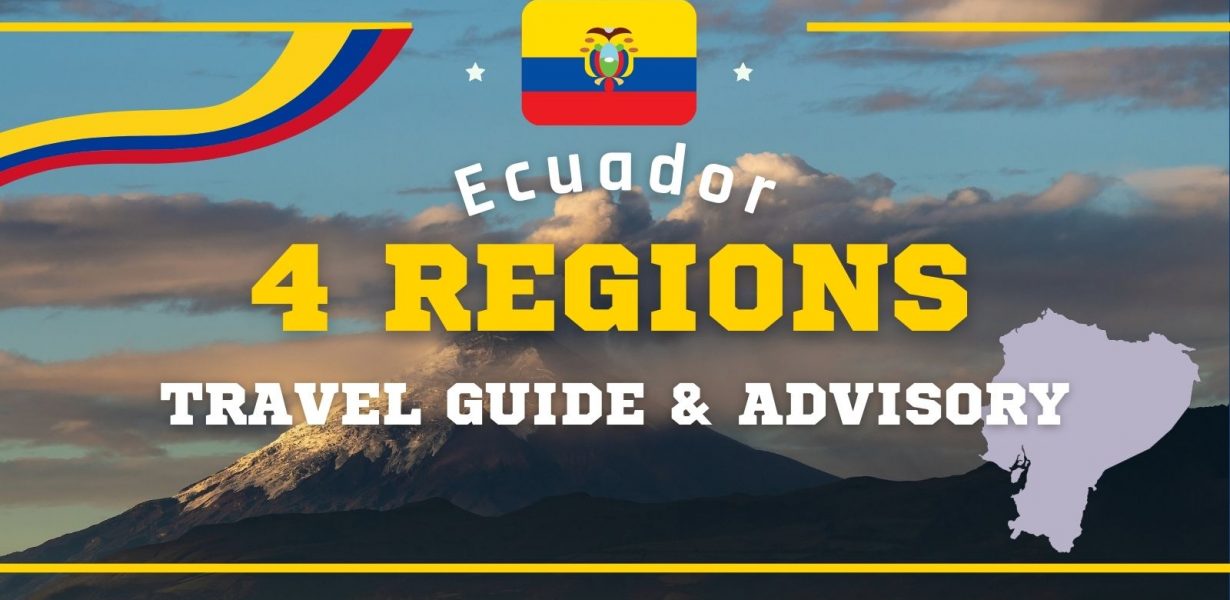








There are no comments.